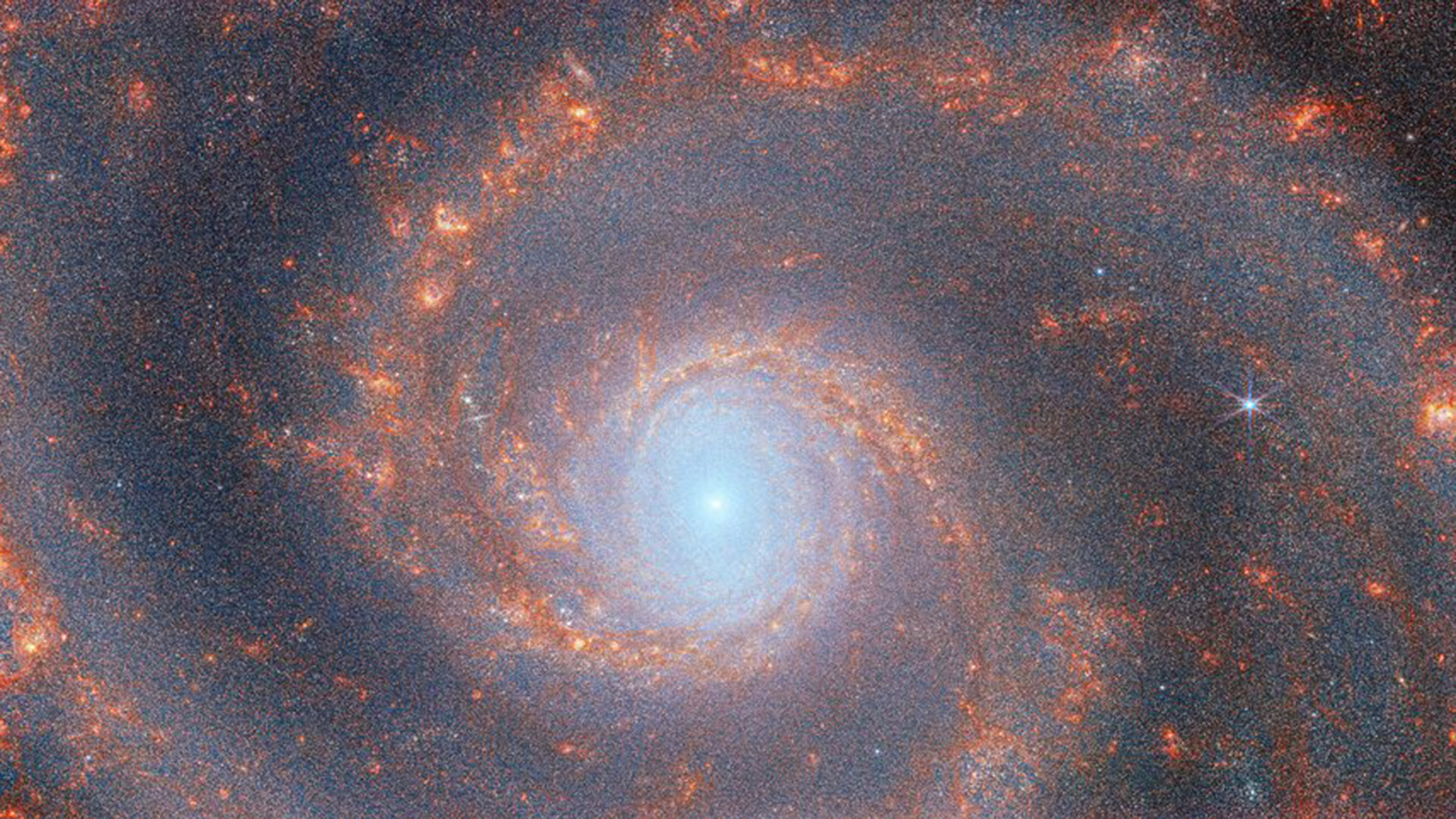Located 27 million light-years away from Earth, the Whirlpool Galaxy, also known as M51 or NGC 5194, is a beautiful and unique-looking spiral galaxy. And now, the James Webb Space Telescope has captured a perfect look at the swirling galaxy, which is trapped in a tumultuous dance with its nearest neighbor.
The new image was released by the European Space Agency (ESA) on August 29, showcasing the long spiraling arms of the Whirlpool Galaxy in vivid color and detail. The galaxy is believed to be caught in a cosmic dance with its nearest neighbor, a dwarf galaxy known as NGC 5195. This nearest neighbor is also believed to be the cause of M51’s unique appearance.
As the ESA explains in earlier observations of the Whirlpool Galaxy, whenever NGC 5195 passes by the large galaxy, its gravitational pull “pumps up waves within the Whirlpool’s pancake-shaped disk.” The ESA says these waves are like ripples in a pond, slowly rotating outward as they expand.

These ripples give the Whirlpool Galaxy its unique appearance and stately disguise, helping its outer spirals become so prominent and easy to see. The ESA says these latest Webb observations of the Whirlpool Galaxy are part of a collective observation series called Feedback in Emerging extrAgalactic Star clusTers, or FEAST. FEAST hopes to learn more about the interplay of star formation outside of our own galaxy.
The composite image included here was created by masking data from Webb’s Mid-InfraRed Instrument (MIRI) and Near-InfraRed Camera (NIRcam). By looking at the galaxy in two different spectrums, astronomers are able to dig deeper and see through more of the material that makes up this unique galaxy.
Previously, Webb has given us unique glimpses at other cosmic entities, including a beautiful image of the Ring Nebula, and even deeper looks at planets within our own solar system, like Mars and Neptune.







